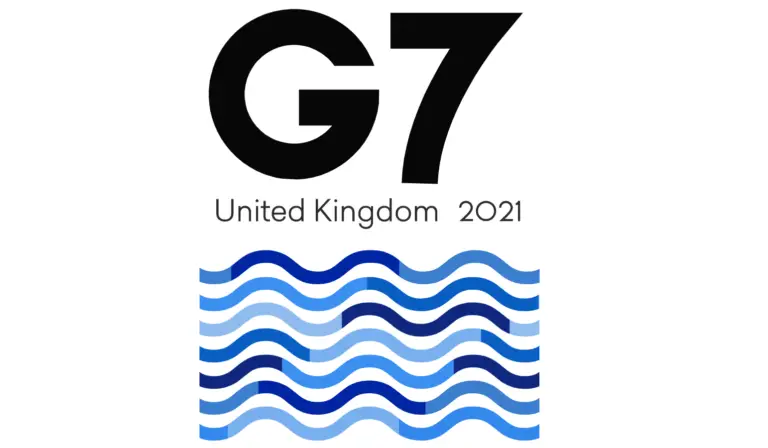For the first time since the COVID-19 pandemic, leaders of some of the world’s most influential and economically powerful countries met in person in Carbis Bay, Cornwall to discuss the most pressing global issues last week. Unsurprisingly, COVID-19 dominated much of the discussions, with commitments focusing on delivering economic recovery and building resilience against future pandemics. But we also saw the climate crisis retain its hold on global politics.
What’s the point of a global diplomatic summit?
Every year, leaders of the world’s biggest democratic regimes have gathered as a forum for taking action on global issues. Previous summits have seen commitments from uniting to fight epidemics to supporting the education of children in poorer countries. Reaffirming links between powerful democracies was a priority for this year’s summit, too; it was the first time the newly elected US President, Joe Biden met Boris Johnson.
What did we gain from this year’s summit? The communiqué set out important international priorities, including delivering one billion COVID-19 vaccine doses to inoculate people in poorer countries, the improvement of early warning systems to prevent future pandemics and renewed commitment to limit the rise in global temperatures to 1.5 degrees Celsius.
International politics held blatant sway over talks. The G7 agreed a green infrastructure spending plan, Build Back Better for the World, to rival financing provided by Beijing’s Belt and Road Initiative for projects in developing countries. This green belt-and-road initiative – likened to America’s post-war Marshall Plan and spearheaded by calls (especially from the United States) to offer a democratic alternative to Beijing’s loans – aims to counter the influence of China, mitigate the impact of COVID-19 and tackle the climate crisis in one fell swoop.
As well as a commitment to set net zero targets by the 2030s, G7 leaders also agreed to end financing for coal generation beyond their borders. In an historic first, the G7 agreed to make climate reporting mandatory in line with the recommendations of the global Taskforce on Climate-related Financial Disclosures. On the biodiversity side, they agreed to a shared G7 Nature Compact, committing to halting and reversing biodiversity loss by 2030.
Held after President Biden’s Climate Summit but before the UN’s COP26 Summit in November, the summit’s position in the political calendar might explain why there was a lack of any further tangible policies on the climate agenda.
What was absent from the summit?
Without removing all cause for cautious celebration, there were plenty of issues which did not feature on the agenda. Ensuring a just transition, where green economic opportunities can be accessed irrespective of socio-economic background or a country’s geopolitical influence, did not form the basis of any specific plans.
The communiqué reiterates commitment to tackling carbon emissions but no specific plans for transport decarbonisation or investment in green innovation were mentioned. Furthermore, member countries without a published strategy to meet a net zero target could only simply commit their “best efforts” to submit long-term strategies for net zero emissions by 2050.
Response to the summit from environmental groups and campaigners has been critical. One specific area of contention is the question of developing nations. Recent analysis by Oxfam and the Swiss Re Institute shows the damaging impact climate change could have on the G7 economies, while emphasising that this impact stands to be greater for developing countries. However, any discussion of climate financing for developing nations fell short of delivering on the G7’s promise of $100 billion a year to help developing countries. And while the promise of one billion doses may be welcome, it is a drop in the bucket of fair global distribution when put into context. This raises more questions about the future of participation in COP26, which could see people from developing countries excluded from negotiations. UN negotiations are global events which must be inclusive to tackle globally important issues like the climate crisis. A slow and fragmented vaccine rollout could inhibit the full potential of COP26 for achieving collective climate action.
What does this mean for COP26?
If the G7 failed to deliver concrete action on the global stage, the outlook for COP26 may seem bleak. The UK faces the enormous challenge of bringing together over 200 countries, businesses, faith groups and NGOs to agree on challenges and undertake urgent policy action. Some have argued that the G7 Summit has failed to set us up for a successful round of COP negotiations. That might be true, but it has also placed even more pressure on COP26 to be the moment when leaders commit to bold action.
All eyes will be on the world’s governments in November as people expect a grand finale to match ambitious commitments. Many will be hoping the G7 was an interim event ahead of COP26, not a lost chance at enacting real change.
One thing is for sure: media attention will only intensify in the run-up to COP. Many individuals and organisations will look to announce their pledges to protect the environment or cut emissions in a space which is already saturated with similar commitments. Luckily, we can expect each one to be examined through the looking glass.




